Eight Chair Exercises for Older Adults with Limited Mobility
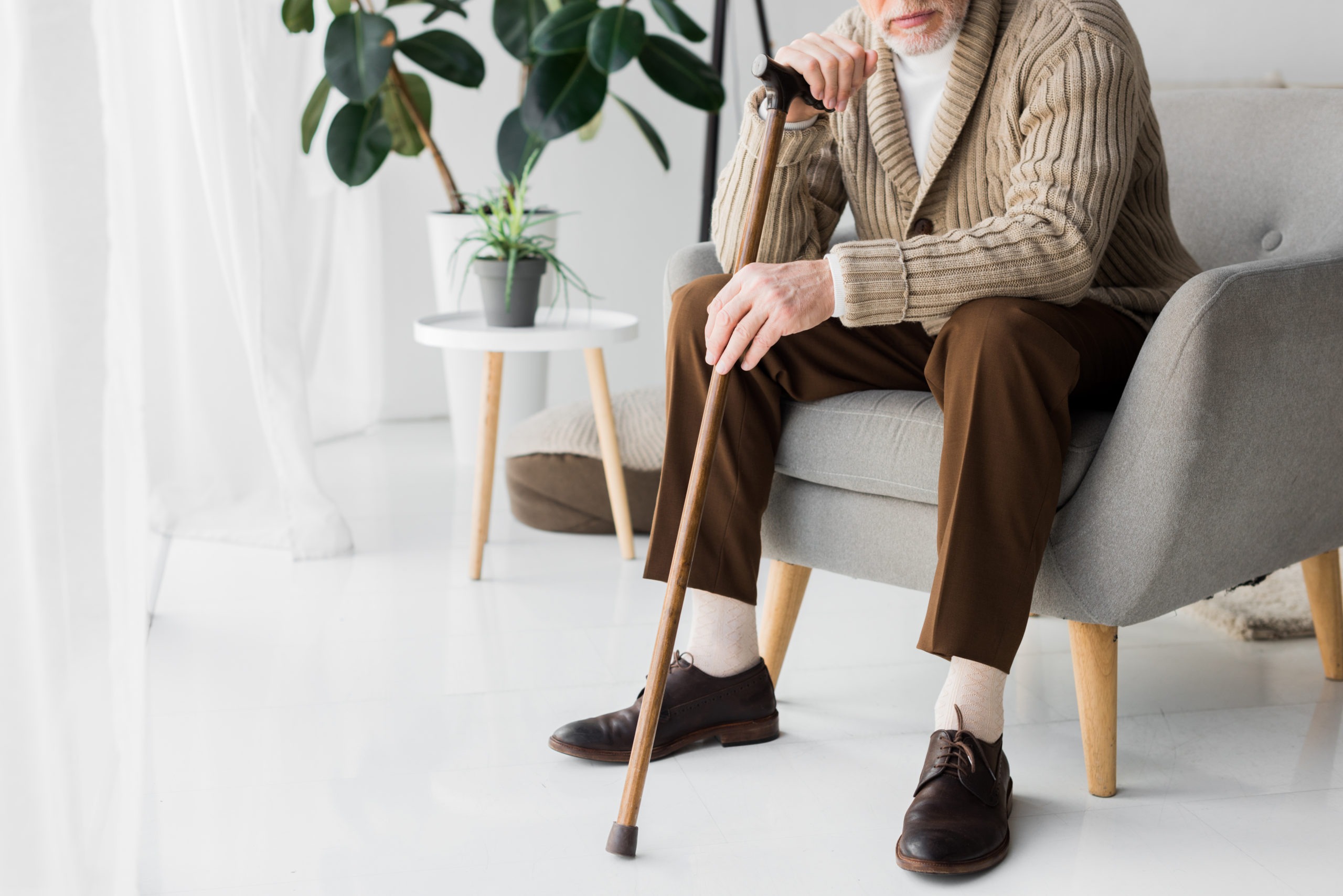
Physical activity is such an important part of healthy aging and can significantly impact your quality of life and longevity—even if you don’t start exercising until your senior years. Finding an exercise program that’s right for you will improve your strength, flexibility, circulation, balance and range of motion. Regular exercise will also help you manage pain, decrease stress and anxiety levels, lower your risk of chronic disease and help you stay as independent as possible. For older adults with mobility challenges, seated chair exercises are a great way to get moving safely. Sitting on a stable chair lowers the risk of falls and other injuries, places less pressure on lower body joints like knees and ankles and can be just as challenging as a standing workout.
Before beginning any exercise program—even one designed for older adults—you should always speak to your doctor. Take it slow, know your limits and listen to your body. After getting the go-ahead (and depending on your fitness level and mobility), try some of these seated chair exercises at home to start enjoying the physical and mental benefits of an active lifestyle:
Wrist and Ankle Rolls
Many older adults experience poor circulation to their limbs which can cause stiff joints and balance and mobility challenges. Start by waking up your hands and feet as a warm-up before moving on to more strenuous chair exercises.
- Sit on your chair without leaning against the chair back and have your feet flat on the ground.
- Open and close your fists 5 times extending your fingers, then roll your wrists 10 times in each direction.
- Now do the same exercises with your feet. Extend your right leg, lift your foot off the ground and point and flex your toes 10 times. Then roll your ankle 10 times to the outside and 10 times to the inside. Repeat on the left side.
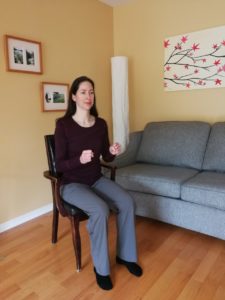
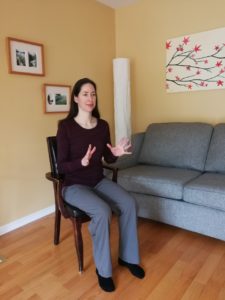
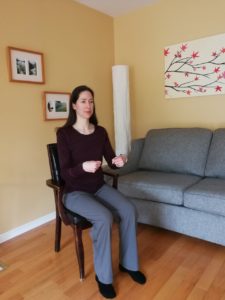
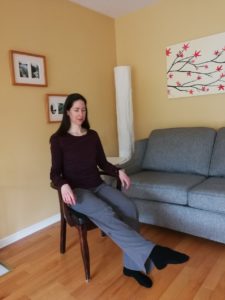
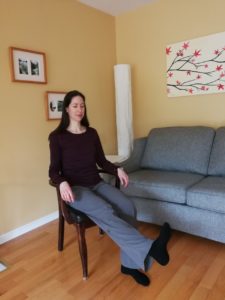
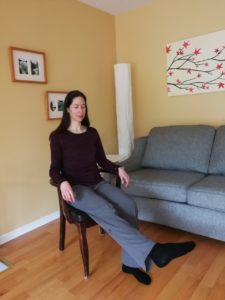
Knee Marches
High knee marches will help with hip mobility, range of motion and get your heart pumping and blood flowing.
- Sit tall on your chair, hold the edges or armrests with your hands and place your feet flat on the ground hip-distance apart.
- Lift your right leg with a bent knee towards your chest as high as you comfortably can.
- Slowly lower your right foot and then lift your left leg towards your chest.
- Repeat this and aim for a total of 20 marches. Work up to doing 3 rounds of 20 marches with breaks between sets.
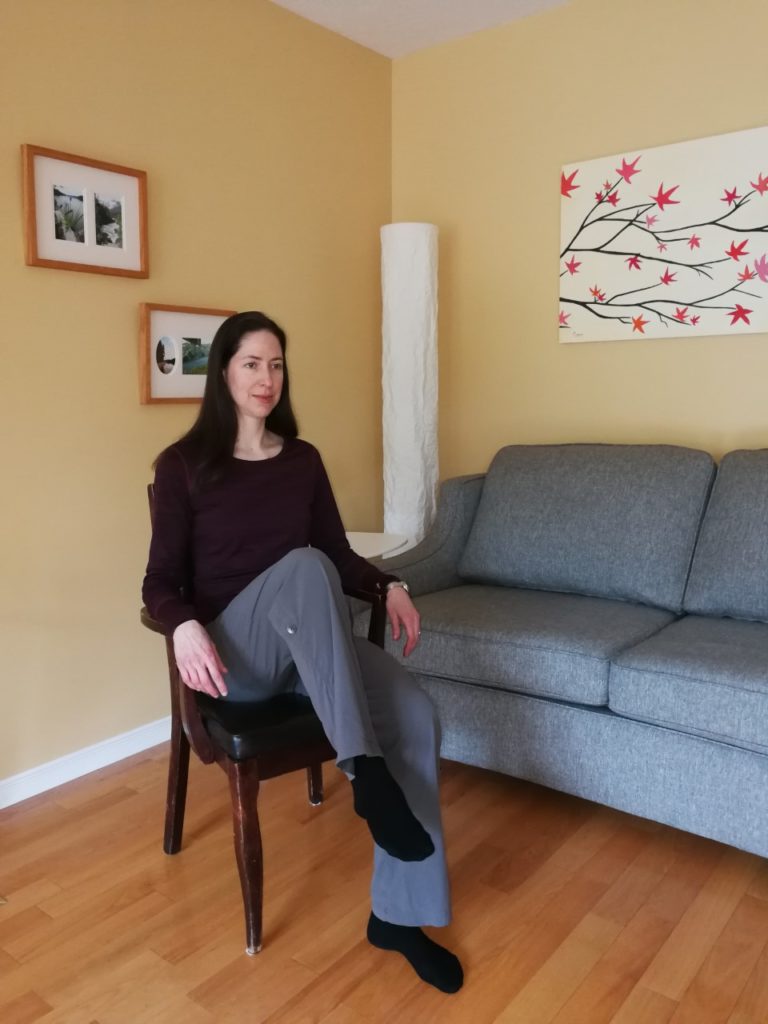
Seated Rows
As we age, changes in our posture can lead to a rounded spine and back pain. This exercise will strengthen your chest and upper back muscles to help correct posture problems.
- Sit on the edge of the chair with your feet flat on the ground and with your arms out in front of you with elbows bent and thumbs pointing up towards the ceiling.
- Pull your elbows back, squeezing your shoulder blades together to target the upper back and chest muscles.
- Return to the starting position and repeat 8-10 times.
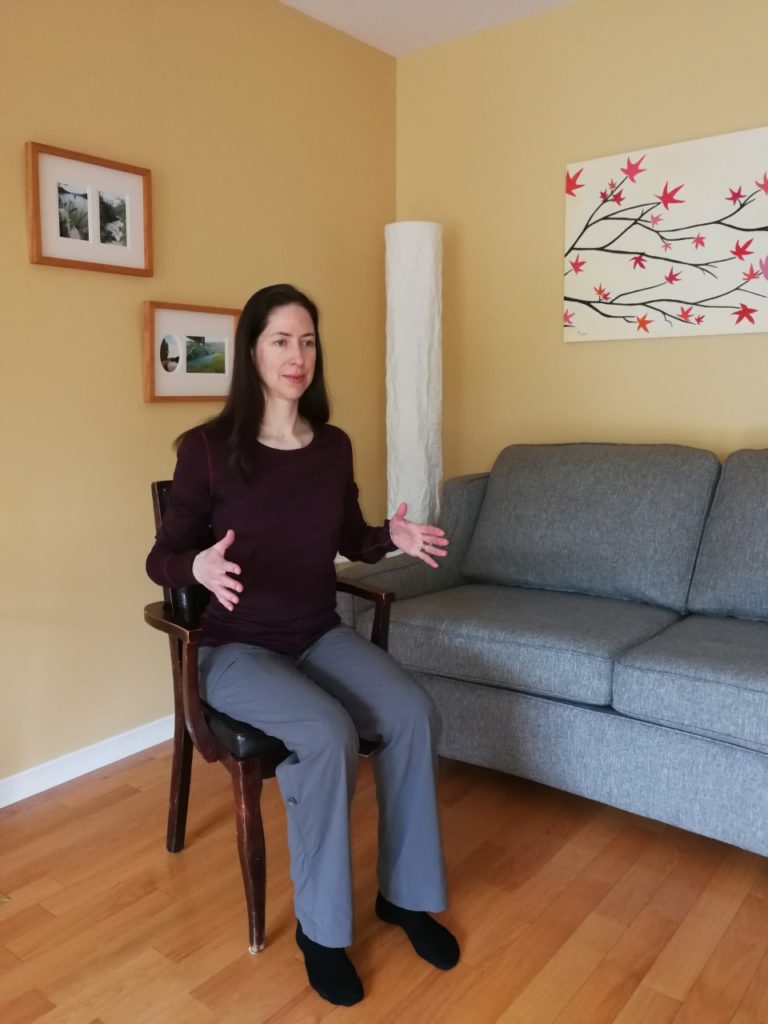
Arm Raises
This exercise will strengthen your shoulders and arms to help you with lifting movements.
- With your feet flat on the floor and your back straight, hold a ball between your palms.
- Stretch your arms so the ball is resting on your legs, ensuring that your elbows are still slightly bent.
- Slowly raise your arms lifting the ball to shoulder level then lower it back down to your legs. To modify this exercise based on your fitness level, these arm raises can also be done without the ball to start, or a light weight can be added for increased resistance.
- Repeat 8-10 times.
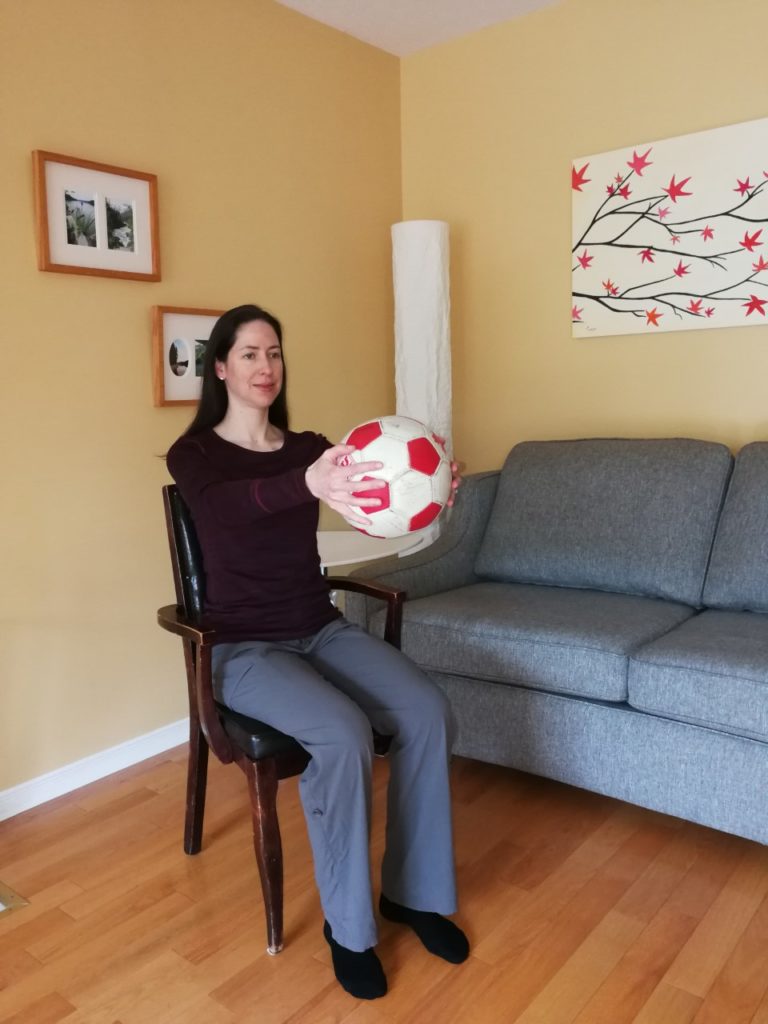
Seated Torso Twist
This exercise is designed to work the core that includes the abdominal, back, hip and pelvic muscles. A strong core supports and stabilizes the spine to make everyday activities easier and to prevent balance-related falls.
- Sit tall with your feet on the floor and hip-distance apart, without leaning on the back of the chair.
- If available, hold a ball between your palms, arms close to your body with elbows bent. Otherwise, place your hands behind your head, elbows bent and pointing out to the sides of the room.
- Exhale and slowly twist to the left as far as is comfortable, without moving the rest of your body.
- Inhale and return to the middle position, keeping your hips stable.
- Exhale again slowly twisting to the right side as far you comfortably can.
- Repeat this exercise until you’ve twisted to each side 8 times. If you’re up for it, rest and then try another set.
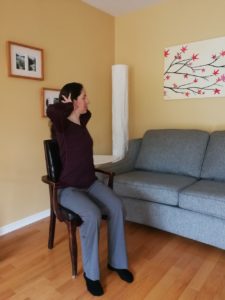
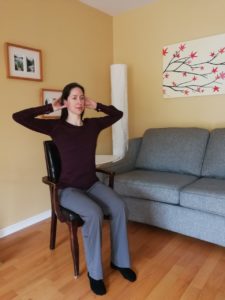
Inner Thigh and Hand Squeeze
Strengthening your inner thighs will help to stabilize your hips, knees, lower back and core. Also, having good upper body strength is important for activities of daily living.
- Sit straight on the edge of the chair with feet flat on the floor
- With bent legs, place a ball or pillow between your knees.
- Squeeze the ball or pillow and press your knees together to activate your thigh muscles. Hold for 2 seconds.
- Release, but keep tension on the ball or pillow so it doesn’t fall. Repeat 10 times.
- Now hold the ball or pillow in front of you with your arms bent. Squeeze it like you’re trying push the air out of the ball. Release and repeat 10 times.
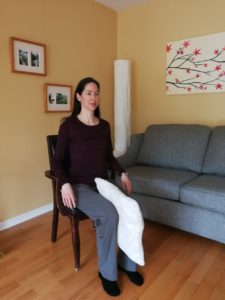
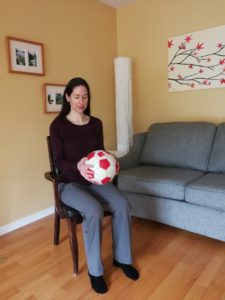
Calf Raises
Seated calf raises will increase your leg strength and circulation.
- Sit tall in your chair with both feet planted on the floor, hip-distance apart.
- Look straight ahead and lift your right heel off the ground as high as you can keeping your toes planted.
- Lower your heel back to the floor and do this 10 more times on your right side.
- Repeat the same movement on your left side for 10 repetitions.
- Then lift both heels up at the same time and hold for 20 seconds. Repeat 10 times.
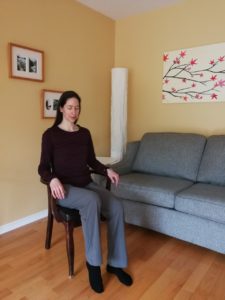
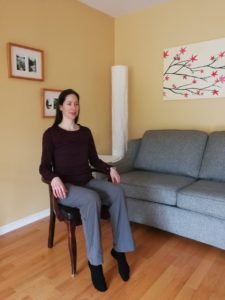
Heel Slides
This exercise will strengthen the hamstrings—or the muscles that run between your bottom and knees—as well as your core. You may want to add a small towel or paper plate under your foot to help your foot slide more easily along the floor.
- Sit tall in your chair with your knees bent and feet hip-distance apart.
- Inhale and extend the right leg, flexing your foot towards the ceiling—heel stays in contact with the ground.
- Exhale and engage the muscles in the back of your upper legs and your buttocks to drag your right heel back to the chair, keeping the heel in contact with the floor.
- Do this 10-12 times before repeating on the left side. Complete two sets on each leg.
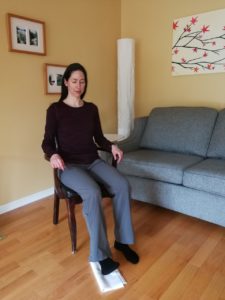
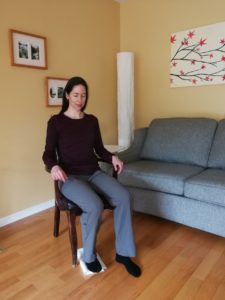
A VHA physiotherapist can help you modify these exercises depending on your mobility level or to find other seated movements that work for you. An active lifestyle will not only benefit you mentally and physically, but will also make everyday tasks like moving around the house, getting out of bed and reaching for things safer and easier. Contact VHA’s Enterprise Health Solutions team at 416-489-2500 ext. 4649 or ehs@vha.ca for more information about our physiotherapy services available for purchase.
Reviewed By: Audrey Letouze, PT
